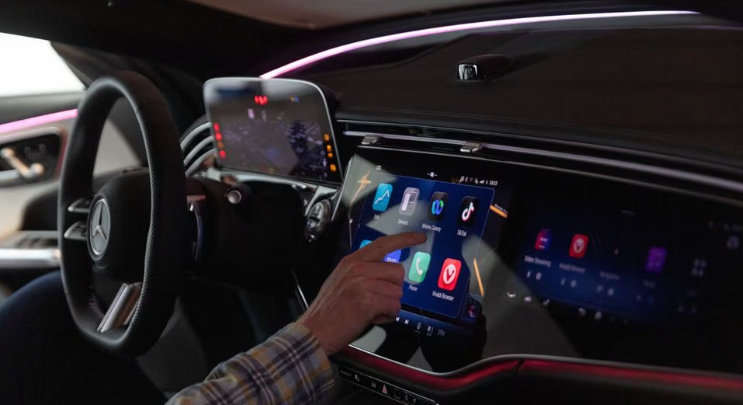The digital luxury automobile of the future will be developed by Google and the German automaker Mercedes-Benz, it was announced recently.
According to the two companies “long-term strategic cooperation,” Mercedes-Benz will be the first automaker to use Google Maps Platform’s updated in-car data and navigational capabilities to construct its own branded navigation experience.
The Google Maps Platform provides programmers with a set of application programming interfaces (APIs) and tools for incorporating Google Maps and its features into their own software. The mapping application programming interface (API) is an important component because it gives programmers access to reliable, up-to-date maps that may be altered to meet the specific requirements of each given program. Features, including mapping, geocoding, routing, and street view are available on the platform. It finds widespread application across a wide range of industries, from transportation and logistics to property and commerce.
Customers will have early access to Google’s upcoming developments by integrating features like Place Details into their Mercedes-Benz automobiles. Both sides are dedicated to exploring new ways to collaborate using Google Cloud’s artificial intelligence (AI), data, and open infrastructure offerings.
Read also: Mercedes-Benz Unites With Qualcomm To Build Snapdragon Digital Chassis Solutions
What to expect from Mercedes-Benz and Google partnership
As part of the agreement, Mercedes will include Google Cloud and YouTube in future MB.OS-powered automobiles. Automatic rerouting, up-to-the-moment traffic reports, and in-depth location data will all be at Mercedes’ disposal due to Google’s geospatial service. Automatic speed adjustments at crossroads, roundabouts and bends will soon be a reality thanks to Google Maps data that Mercedes-Benz will employ to develop these capabilities.
CEO Ola Källenius described the licensing arrangement as a “win-win” for both sides during a press conference conducted on Wednesday at the Mercedes-Benz R&D site in Sunnyvale, California. Our company is the “complete architects of the stack.”
Google and Alphabet CEO Sundar Pichai has said that their collaboration will extend far beyond this.
The CEO elaborated, “We will provide our AI and data capabilities to expedite their sustainability initiatives, promote autonomous driving, and provide an enhanced customer experience for Mercedes-Benz, in addition to enabling them to construct a customized navigation interface.”
More on the Agreement
Mercedes-Benz spent a long time perfecting its MB.OS software. It’s Mercedes-most Benz’s recent in-car operating system. Among its many useful characteristics are:
Touchscreen interfaces let drivers easily access their preferred settings and functionality thanks to a personalised start screen.
Compatibilities with the car’s other electronics, like the gauge cluster and the stereo. It makes it possible to provide a more unified and uniform interface.
A voice-activated digital assistant that responds to your questions and orders. As an example, this assistant can help drivers locate petrol stations and adjust the temperature.
Constantly monitoring your vehicle’s condition and notifying you of any problems it may have is a great safety feature. As a result, drivers can take care of issues before they become costly headaches by using this function.
Future Mercedes vehicles, internally dubbed “MMA,” will be the first to employ this operating system when production begins at the end of 2024.
Mercedes-Benz is not the first car company to include Google’s range of services. Not only has Ford done this, but so have General Motors, Renault, Nissan, and Ford. But, with this new cooperation, the luxury automaker can now compete with Tesla, founded by Elon Musk, and other Chinese automakers like BYD.
